The U.S. dollar firmed as markets awaited new tariff details from the White House, fueling volatility across currencies and commodities.
The euro dipped below $1.08 on tariff concerns and soft inflation, while the yen and sterling faced pressure from trade risks and easing domestic data. Gold surged past $3,130 as investors sought safe-haven assets, while silver retreated ahead of the April 2 tariff deadline. Eyes now turn to U.S. payrolls for further direction.
| Time | Cur. | Event | Forecast | Previous |
| 12:15 | USD | ADP Nonfarm Employment Change(Mar) | 118K | 77K |
| 14:30 | USD | Crude Oil Inventories | -0.4M | -3.341M |
| 19:00 | USD | U.S. President Trump Speaks | - | - |
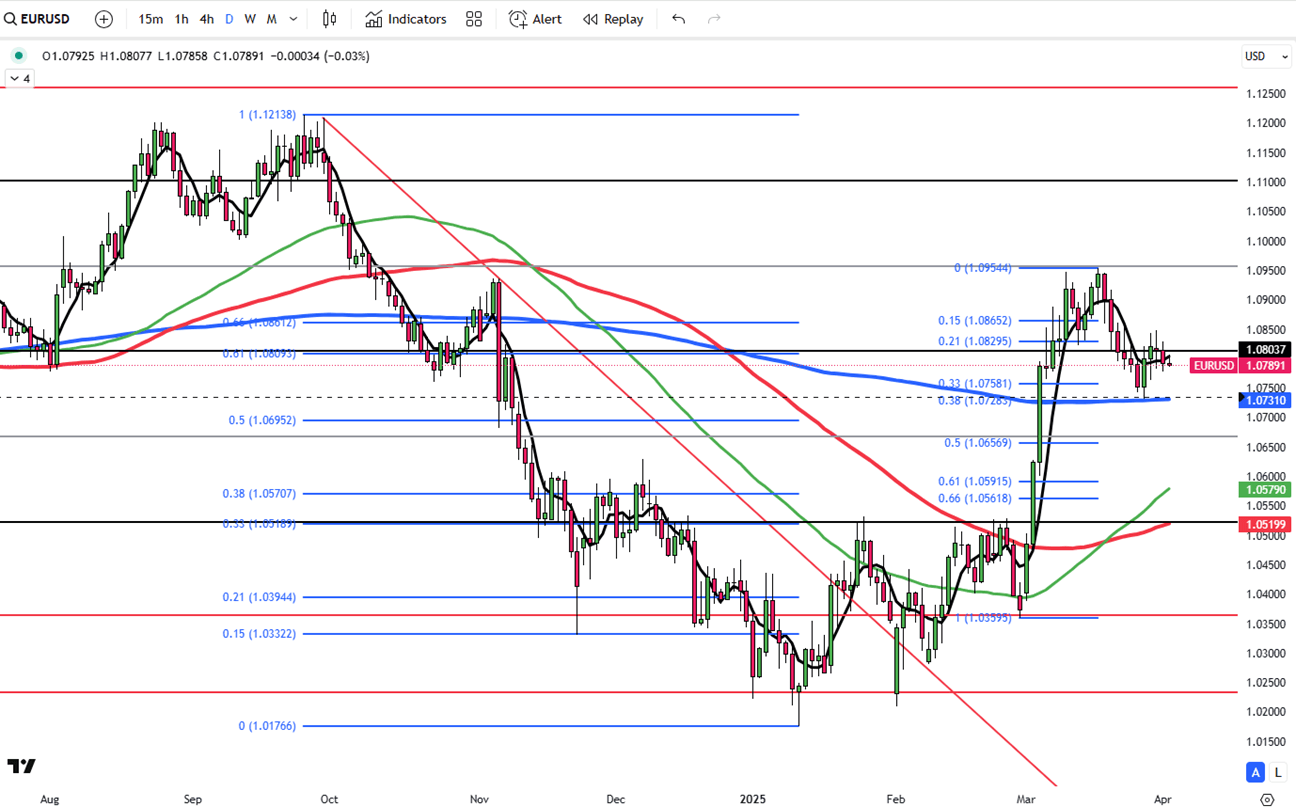
The euro slipped below $1.08 after reports that the White House may impose 20% tariffs on most U.S. imports. Markets await details on Trump’s reciprocal tariffs, set for April 2, following last month’s duties on steel, aluminum, autos, and Chinese goods.
Eurozone inflation slowed to 2.2% in March, the lowest since Nov 2024. Core inflation fell to 2.4%, the weakest since Jan 2022, increasing expectations of a 65 bps ECB rate cut this year.
Despite the decline, the euro rose 3% last month, supported by a weaker dollar and Germany’s fiscal stimulus plan.
Key resistance is at 1.0860, followed by 1.0950 and 1.1000. Support lies at 1.0730, then 1.0660 and 1.0600.
| R1: 1.0860 | S1: 1.0730 |
| R2: 1.0950 | S2: 1.0660 |
| R3: 1.1000 | S3: 1.0600 |
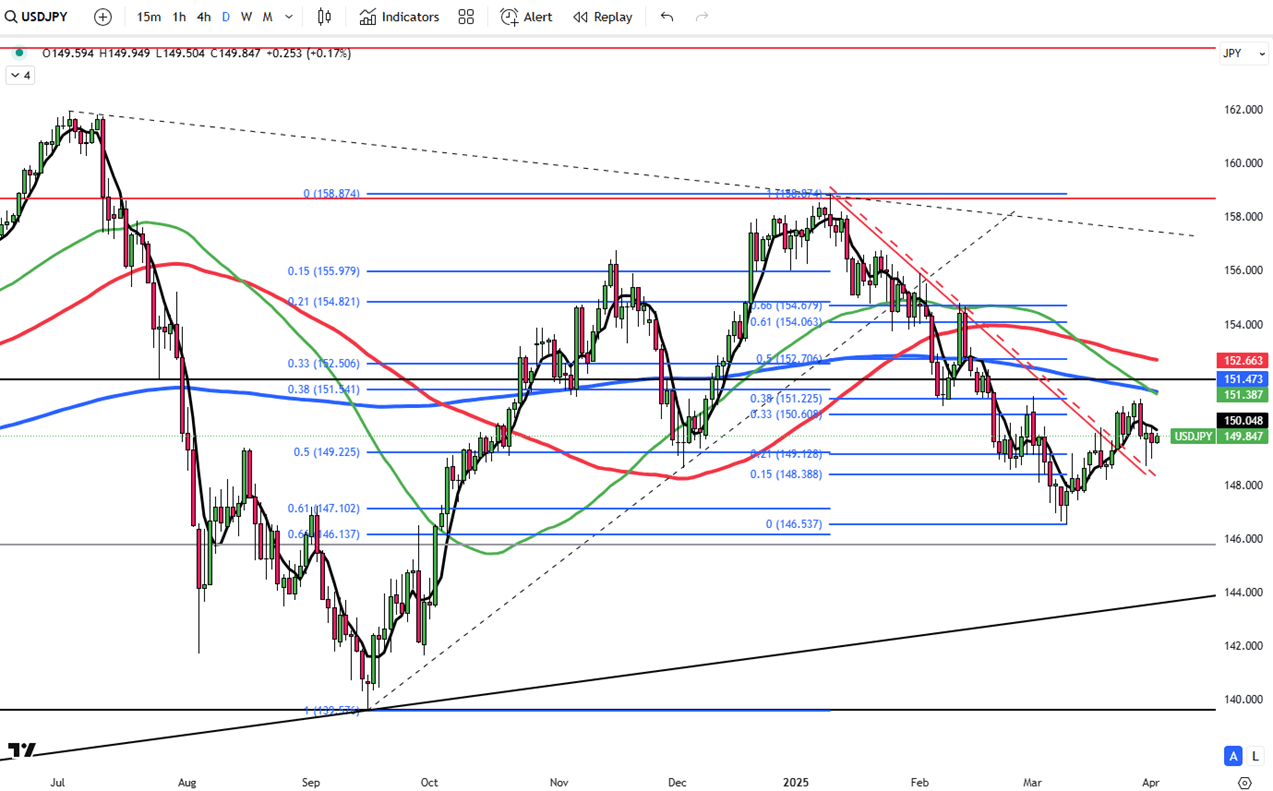
The yen held steady at around 149.8 on Wednesday, but there was little change this week as markets awaited Trump’s tariff announcement. The proposed tariffs, targeting countries taxing U.S. goods and including car imports, pose risks to Japan’s key export sector.
BoJ Governor Ueda warned the tariffs could disrupt global trade and growth. Business sentiment fell in Q1, highlighting concerns over U.S. trade policy. While a BoJ rate hike is still expected later this year, trade tensions and domestic uncertainty cloud Japan’s outlook.
Key resistance is at 151.70, with further levels at 152.70 and 154.00. Support stands at 147.00, followed by 145.80 and 143.00.
| R1: 151.70 | S1: 147.00 |
| R2: 152.70 | S2: 145.80 |
| R3: 154.00 | S3: 143.00 |
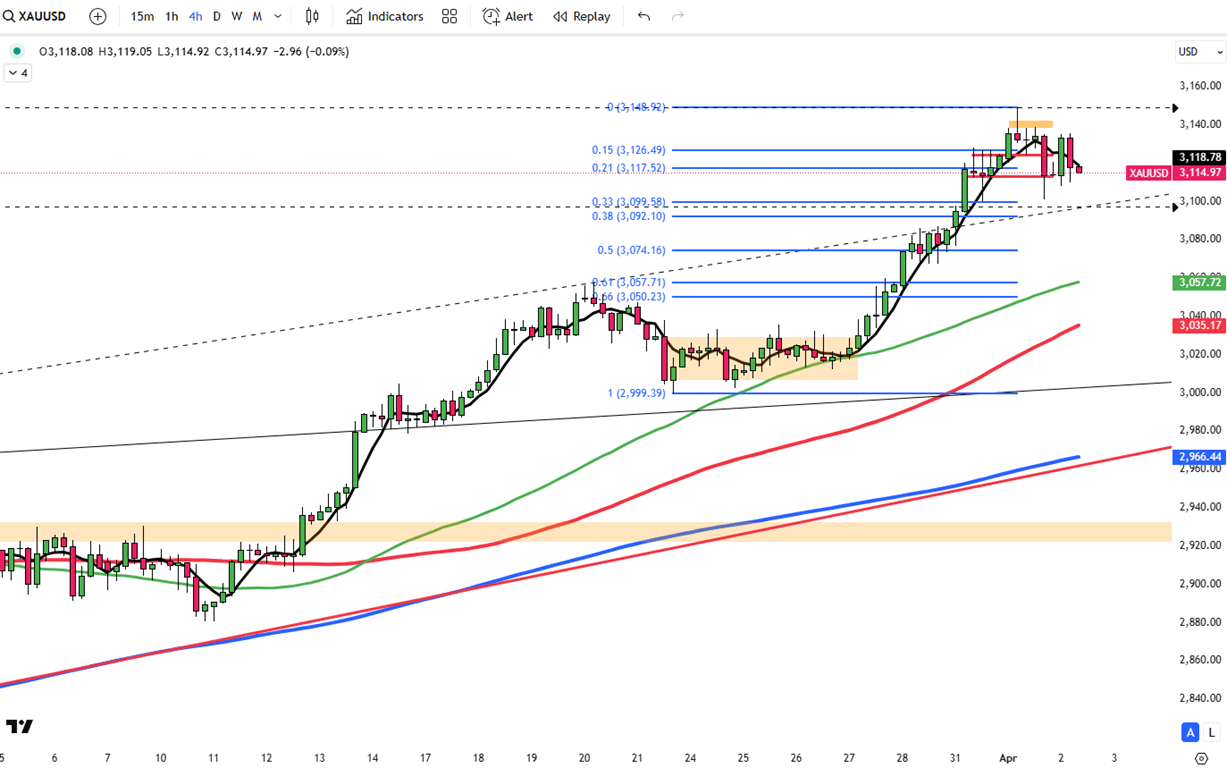
Gold surged past $3,130 on Wednesday, nearing record highs, driven by risk aversion ahead of potential new U.S. tariffs. While details are pending, the White House confirmed the tariffs would take effect immediately once announced. Trump indicated multiple countries would be targeted, raising fears of broader economic fallout.
Gold also gained support from expected Fed rate cuts, strong central bank buying, and rising ETF demand which is led by a 233,000-ounce addition from a Chinese gold ETF last week.
Key resistance is at $3,150, followed by $3,200 and $3,250. Support stands at $3,085, then $3,055 and $3000.
| R1: 3150 | S1: 3085 |
| R2: 3200 | S2: 3055 |
| R3: 3250 | S3: 3000 |
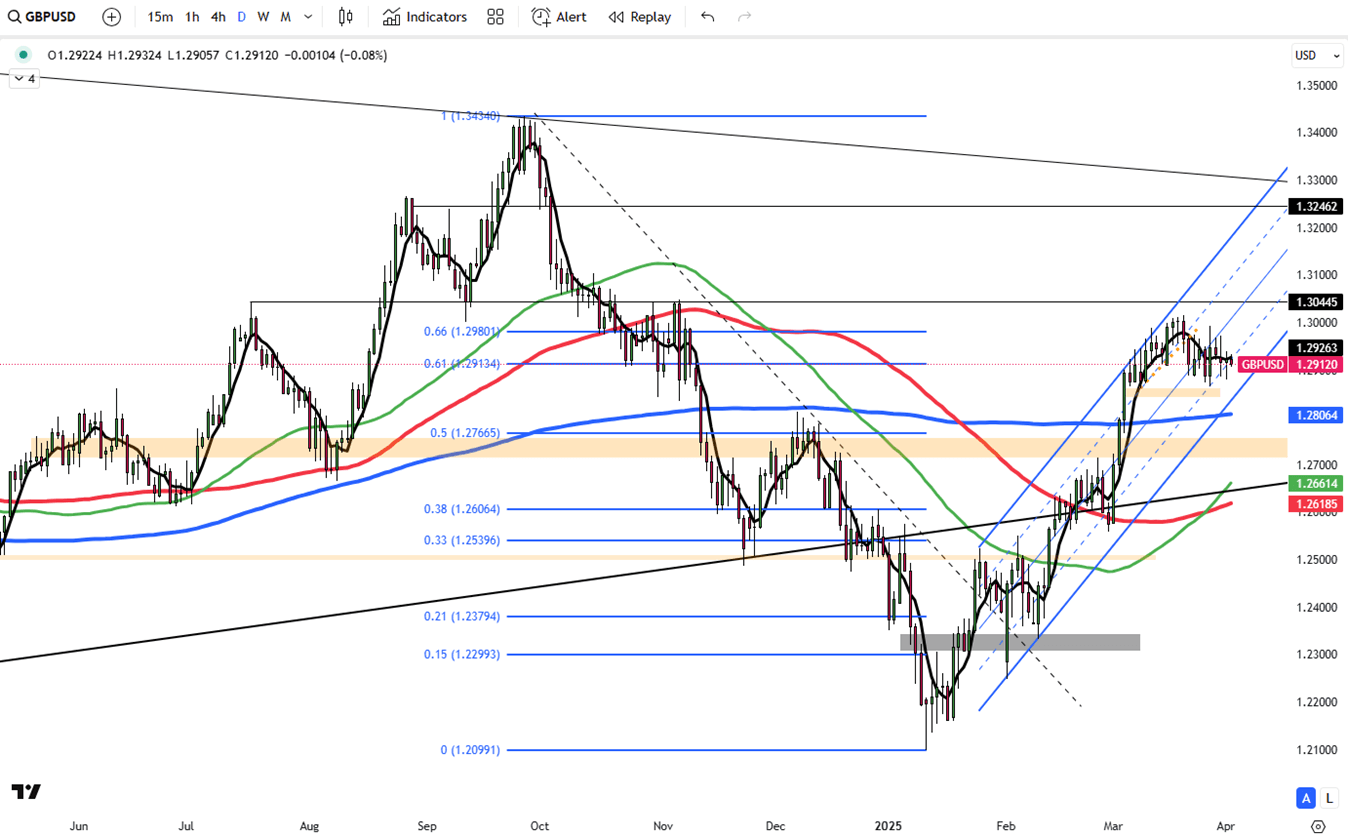
The British pound fell below $1.29, its lowest in nearly two weeks, after softer February inflation and the UK Spring Statement.
Finance Minister Rachel Reeves said 2025 inflation is now projected at 3.2%, up from October’s 2.6% forecast. Economic growth for 2025 was cut from 2% to 1%. Public sector borrowing is expected to fall from £137.3B (4.8% of GDP) to £74.0B (2.1%) by 2029–30, though 2025–26 borrowing will be £12.1B (0.4%) higher than previously estimated.
To ease fiscal pressure, the government announced welfare reforms, spending cuts, and limited tax changes. February inflation eased to 2.8%, just below the 2.9% forecast and in line with BoE targets.
If GBP/USD breaks above 1.3050, resistance levels are at 1.3100 and 1.3150. Support is at 1.2860, followed by 1.2800 and 1.2715.
| R1: 1.3050 | S1: 1.2860 |
| R2: 1.3100 | S2: 1.2800 |
| R3: 1.3150 | S3: 1.2715 |
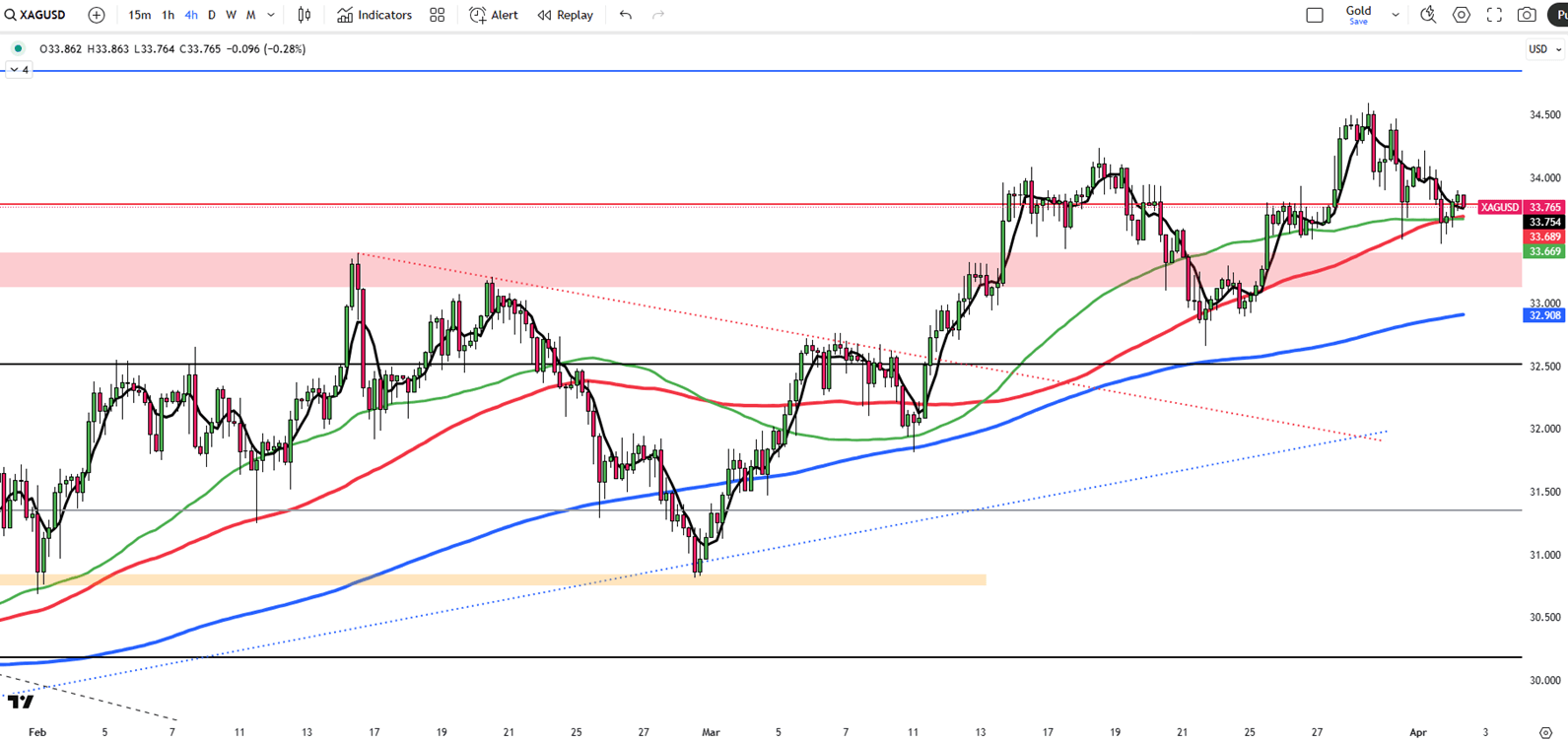
Silver eased to $33.8, down from the five-month high of $34.58 on March 28, as markets awaited Trump’s reciprocal tariffs set for Wednesday.
Sentiment was mixed between fears of a trade war hurting industrial demand and silver’s safe-haven appeal amid slowdown concerns. Trump reaffirmed plans for broad tariffs and pushed for a tougher trade stance.
U.S. manufacturing contracted in March, and February job openings dropped to 7.57 million. Markets now turn to Friday’s nonfarm payrolls for economic signals.
If silver breaks above $34.85, resistance levels are at $35.40 and $36.00. Support stands at $33.50, followed by $32.50 and $32.15.
| R1: 34.85 | S1: 33.50 |
| R2: 35.40 | S2: 32.50 |
| R3: 36.00 | S3: 32.15 |
成为我们社区的一员吧!
然后免费加入我们的电报频道并订阅我们的交易信号简报!